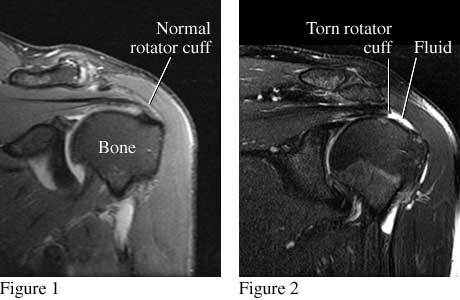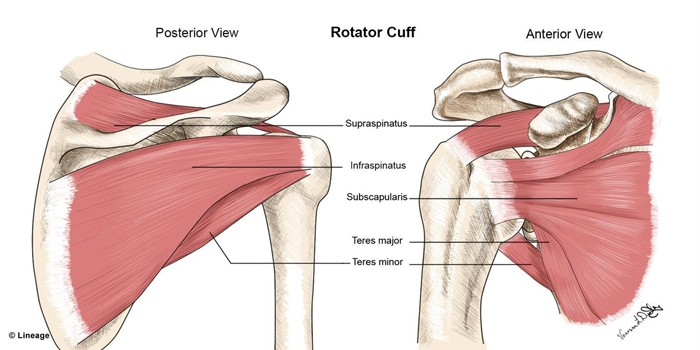Whether you are having trouble putting on a coat, carrying your purse, reaching the top shelf, or lifting your child, you may have recently realized how impactful shoulder pain can be. What may start off as mild stiffness or soreness can quickly progress to significant limitations and forced activity modification or restriction. Shoulder pain can be caused by a variety of injuries and conditions, with rotator cuff dysfunction being the most common cause in adults. The term rotator cuff dysfunction includes a wide spectrum of conditions from acute inflammation of the rotator cuff tendons to partial and full-thickness rotator cuff tears. How do you know if you are dealing with a rotator cuff injury? What should you do to treat a rotator cuff injury? Does the rotator cuff heal itself and get better on its own, or will you need surgery in order to move and feel better? I’ve answered those questions and more below in my 7 Thoughts for Patients with Suspected Rotator Cuff Dysfunction.
1. Rotator cuff dysfunction a normal part of the aging process, just like wrinkles or grey hairs. Over 60% of people will demonstrate rotator cuff tearing by age 80 (Yamamoto et al, 2010).
2. Rotator cuff tears can be reliably diagnosed without any type of imaging such as an x-ray or MRI. In fact, the diagnosis can be made by reviewing your history and performing a good clinical exam including assessment of strength and range of motion.

3. Not all rotator cuff tears are created equally. Some tears occur due to an acute injury such as a fall or a twisting of the arm, while others occur slowly over time due to degeneration of the rotator cuff tendons. Some tears are very small and have no impact on function or movement, while others are full-thickness tears which can cause significant pain and loss of strength and mobility.
4. Most people successfully recover from rotator cuff tears without needing any type of invasive treatment (medications, injections, or surgery). In fact, many patients who have severe rotator cuff tears that cannot be surgically repaired experience significant improvements in pain and function after completing physical therapy (Christensen et al, 2016).

5. Since rotator cuff dysfunction responds so well to physical therapy and poses so few risks, the medical consensus is that all patients with suspected rotator cuff dysfunction should start with a trial of physical therapy before receiving prescription medications, injections, or surgery.
6. Surgically repairing your rotator cuff doesn’t always fix your pain – it’s more complicated than that! Your rotator cuff isn’t the only tissue in your shoulder that causes pain – that’s why a high number of individuals who have rotator cuff surgery still have pain years later!
7. The longer a rotator cuff tear persists without treatment, the less likely you are to return to previous level of activity. As the complications from rotator cuff dysfunction become more severe, the chances of recovery diminish.



